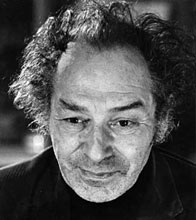|
Henghes moved briefly to Switzerland,
and then on to England in 1937. During the war he was in Australia
for a period. On his return to England he wrote on current affairs for
the BBC.
Henghes taught at the Royal College of Art under Frank Dobson
and had various international exhibitions.
In 1954 Henghes moved to the south of France where he worked
for a number of years returning to England to take up the
post of Head of Fine Art at Winchester School of Art. On his
retirement Henghes returned to France where he died in 1975.
Throughout his working life Heinz Henghes came into contact with
Artists from diverse 'schools'. Early contacts were with
the Surrealists including Man Ray and Ernst. When in Italy for a
time Henghes enjoyed the patronage of Ezra Pound. Pound was also
patron to other Artists including Gaudia Brezka. During this time
Henghes befriended the Princess di San Faustino (Kay Sage), and
later introduced her to her second husband Yves Tanguy. When in
England Henghes naturally came into contact with many of the leading
Artists of the day.
Despite many friendships in the art world, no working associations
developed which might have tempted Henghes to cast his lot
in with a particular 'school' of art. Henghes
moved with the times, and although his work is always distinctive
his materials and approach changed through the decades.
In 1972 Theo Crosby wrote "For a sculptor imbued with
stone carving...Henghes has, because of his involvement with
teaching, been constantly aware and concerned with this process
of change... In all his sculptures there remains the preoccupation
with sensuality, with the wonderful ambiguity of the human
figure, with the translation of sensibility into image".
More
biographical notes >>
Techniques
Exhibitions & Collections
Website design by EditableWeb
|
